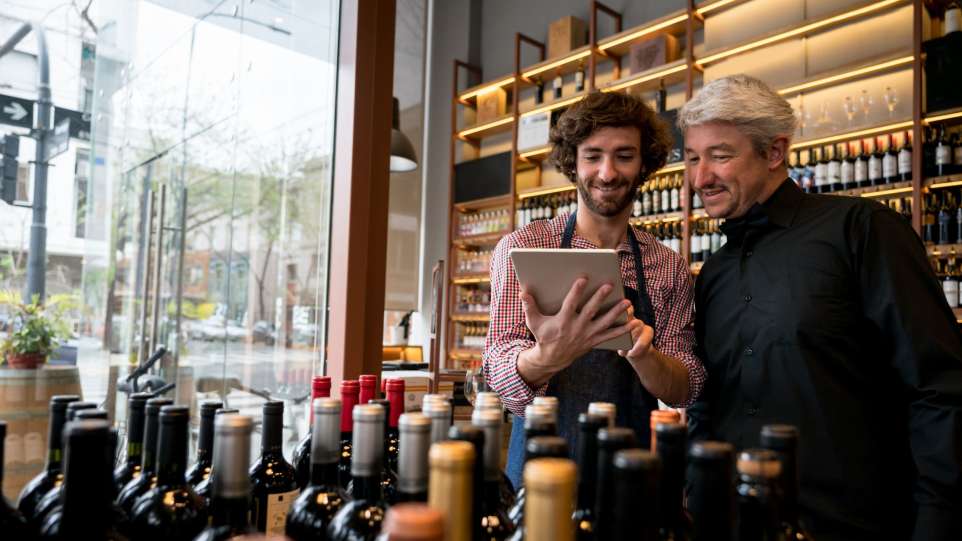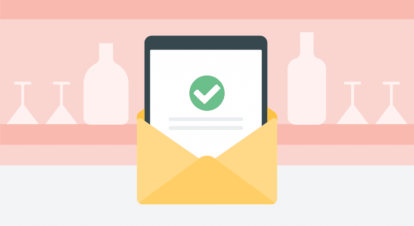The future has arrived – which is great news for restaurant owners. The fast-paced food service industry has been crying out for a better electronic point of sale (EPOS) system for too long now.
So what is an EPOS exactly?
An EPOS system is an updated version of the classic checkout till. Backed up by the cloud, this system not only handles each transaction but also helps the modern business collect and analyse valuable data for making more informed decisions.
Until now, affording this kind of tech was a lavish expense many restaurateurs could only dream about. However, now that’s all changed.
Say hello to subscription-based EPOS systems.

If you haven’t noticed, subscription software is taking over the world. From Netflix to Apple Music, the option to pay small subscription fees rather than a huge chunk upfront has quickly become a crowd favourite.
However, the movie and music industries are not the only ones to embrace this change. The restaurant industry wants a slice of that sweet success too.
So what’s the fuss all about?
In this article, we’ll tell you everything you need to know about these systems and discover why they can be your restaurant’s new best mate.
What Is a Subscription-based EPOS System?
For years, the foodservice industry has endured the trials and tribulations that came with the former restaurant EPOS. You know what I’m on about: unavoidable support fees, upfront hardware investments, and unwieldy (not to mention pricy) on-site-only software updates.
But, like poor Basil Fawlty, we accepted these headaches as part and parcel of the hospitality business, and we soldiered on (even when we felt like jumping out a window).
Thankfully, you no longer need to suffer.
Today, leading EPOS companies in the UK have embraced subscription-based systems, allowing more business owners to streamline and simplify their operations. Once you do that, you can focus on your passion, why you opened a restaurant in the first place.
What does this new format look like?
- Free support
- Affordable monthly or annual payments
- Remote software updates you can get with non-proprietary hardware
In terms of aesthetics, this EPOS till is no Henry Hoover. We’re talking next-level innovative tech that would make James Bond green with envy.
Your restaurant’s new secret weapon? A sleek iPad.
But instead of dazzling your son with it as a present that keeps him quiet in the car, you’ll be using it to run your business.
What Is a Traditional POS System?
On the flip side, we have traditional or legacy POS systems.
These run on closed, internal networks, storing data on a local server. However, as we briefly mentioned earlier, this can pose a problem. As the system is reliant on the local server, it makes the hardware and your precious data extremely vulnerable to any damage or corruption.
Let’s say some plonker spills a mug of tea on your old-school system. If your server crashes, your business can grind to a halt. And these days, disruptions to service mean you’re going to lose customers. No one’s willing to wait.
The threat of technical issues that comes with traditional or legacy EPOS systems put your entire business at risk. Which – clearly – is not worth it.
Traditional POS vs. EPOS: Which Is the Best?
I know what you’re thinking.
EPOS systems can crash too. After all, they need the Internet to work, right?
Well, not all of them.
Some EPOS systems, like TouchBistro, work on a hybrid system. A hybrid system runs on two elements: a hardwired, local connection within your restaurant and access to data through the cloud. This means your system still works if the Internet cuts out.
Reliability and security are important – of course, they are.
But these aren’t the only factors. As a business owner, you want a system that is cost-efficient, easy to maintain, secure and reliable, AND ultimately helps enhance the guest experience and increase sales.
Not asking for too much, is it?
Well, let’s get down to the nitty-gritty to find out which really is best: a traditional POS or a modern EPOS.
| Traditional Legacy POS | Subscription-based EPOS | |
|---|---|---|
| Cost | £1,200 to £2,000 with £25 to £50 a month support fee. | Starting at £49 / month |
| Payments | Upfront licensing fee & continual upgrades | Monthly & annual payment options |
| Data Access | On-site-only access to EPOS reporting & data | Anywhere, anytime access to EPOS |
| Software Updates | Completed onsite (pricey and infrequent) | Completed remotely, for free, every 2 to 4 weeks |
| Main Focus | Daily restaurant operations management | Boosting performance and revenue |
| Maintenance | Additional fees for physical maintenance and upgrades (must be performed by an expert at the store location) | Updates and maintenance are done remotely |
The comparison is pretty clear. But one big question remains.
How do these systems really benefit your restaurant?
6 Reasons You Should Choose a Subscription-Based EPOS
By diving deeper into the benefits of these modern systems, we can start to see the bigger picture.
Here are 6 reasons that restaurant owners are moving to a subscription-based system.
1. Usability
Hands down, subscription-based EPOS solutions are far less complicated than traditional systems. The traditional option requires an IT expert every time a problem surfaces, while subscription-based issues can be handled directly by the provider.
The modern systems are simple, slick, and use the most cutting-edge technology to ensure continued support for you and your customers.
And let’s be honest.
A user-friendly restaurant EPOS till can save you a lot of time.
The user-friendly design not only helps you train staff faster, it also helps employees serve customers faster – a better experience for employees and customers alike.
2. Reliability
Fun fact.
According to Forbes, more than 90% of customers will stop dealing with a company after three or fewer bad experiences.
You may be worried that your business will grind to a halt when the ‘Beast from the East’ rolls in and knocks your Internet out. On a busy day, this would be a nightmare – employees could no longer send orders to the kitchen and customers couldn’t check out.
However, when you have a hybrid EPOS system, you won’t need to worry at all. These systems aren’t just backed up by the power of the cloud – they’re also hardwired through a local connection. That means that even if the Internet does go down, your system keeps running.
That way, your business runs smooth even in the midst of a storm.

3. Mobility
Having an iPad EPOS makes it much easier to serve customers wherever they are, whether in line or at a table.
Going tableside with your iPad lets you take orders and finalise bills for a more convenient experience – for both employees and customers – and also reduces the chance of any mix-ups that might happen going back and forth to a stationary system.
With just a few swift taps on the touchscreen you can:
- Take orders that are sent directly to the lads in the kitchen.
- Split checks in several different ways, with different payment methods.
- Give customers the option to sign right on the screen for a faster check out.
In the competitive restaurant industry, having greater mobility than the Reliant Regal from Mr Bean certainly has its advantages.
4. Affordability
A subscription-based EPOS system helps you sidestep the large upfront costs associated with traditional technology. Instead, you often have a choice between monthly or annual payment options. And forget four, five-year contracts. With a subscription-based EPOS, you can opt out whenever you need to – without question.
Then there’s the hardware itself, which is less expensive since many subscription-based EPOS solutions run on iPad and tablets.
When it comes to software updates, the switch to a subscription-based restaurant EPOS continues to give financially. Software updates become as hassle-free and frequent as the apps on your phone.
This eliminates any need to pay fees just to stay on top of restaurant management trends. With the subscription-based system, every new upgrade will be offered automatically, free of charge.
5. Flexibility
Imagine you have a thriving restaurant with a jam-packed beer garden during the summer. But during the colder weather, it’s a smaller, indoor-only business.
A big flaw with traditional POS systems is that they typically require you to take more than you need. Buying instead of leasing a POS means you have to swallow an uncomfortably large licensing fee.
A subscription-based EPOS may just be what you need.
Seriously.
It can provide you with the licensing flexibility required to make these seasonal changes. Get extra licenses when your patio opens up. Scale them back when it closes.
A subscription-based EPOS allows you to scale your tools according to the needs of your business. What you need, when you need it. And nothing more.
6. Versatility
As we mentioned earlier, EPOS iPad systems I’d put iPad Based EPOS systems as that is more in line with our talk track.provide easy and constant updates, unlike their predecessors which run on ancient software.
But what if your EPOS could offer you more? With a subscription-based EPOS system, you have a powerful iPad that is far superior and much more versatile.

Why is versatility so important?
A versatile system allows you to expand hardware uses such as:
- Monitoring inventory levels
- Tracking employee work hours
- Taking care of wages
- Streamlining additional restaurant operations
- Using other EPOS peripherals such as barcode scanners, receipt printers, and card machines
With regular software updates, the longer you subscribe, the better and more efficient your system becomes – rather than the legacy POS systems that can quickly become outdated.
Plus, if you end up switching your EPOS system, you can use an iPad for something else rather than suddenly having a very expensive dust collector.
All around, a subscription-based EPOS system is a much more compatible, versatile choice that gives you more power for your pound.
How a Subscription-based EPOS System Is Leading the Way Forward
We understand the restaurant business can be tough. Barely a day passes without you feeling the need for a cheeky pint – or three – at the end of your shift.
But it can be easier.
Whether you own a brewery, coffee shop, or fine dining restaurant, having a subscription-based, hybrid EPOS system can help inform key business decisions, simplify daily tasks, and provide a better, more memorable experience for your customers.
Ultimately, EPOS solutions like this are changing the way restaurateurs run their business, helping you stay relevant and reliable in a fast-paced industry.
Clunky legacy systems belong in the past. Subscription-based EPOS systems will take you into the future.
The choice is yours.
About the Author
Christina spent her 20’s in the food and beverage industry, primarily front of house, but also in sales and marketing roles for independent restaurants and hotel groups. She joined TouchBistro’s UK team in 2018. Her favourite restaurant is Cornerstone by Tom Brown.







